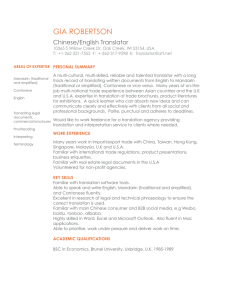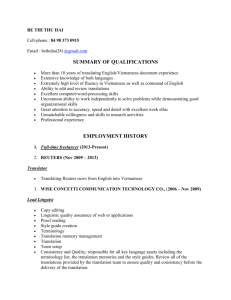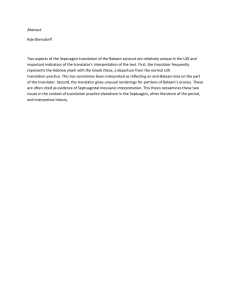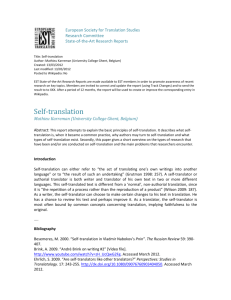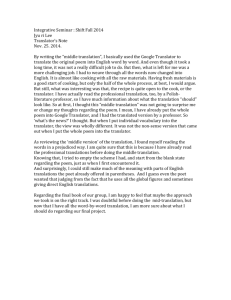Research Summary
advertisement
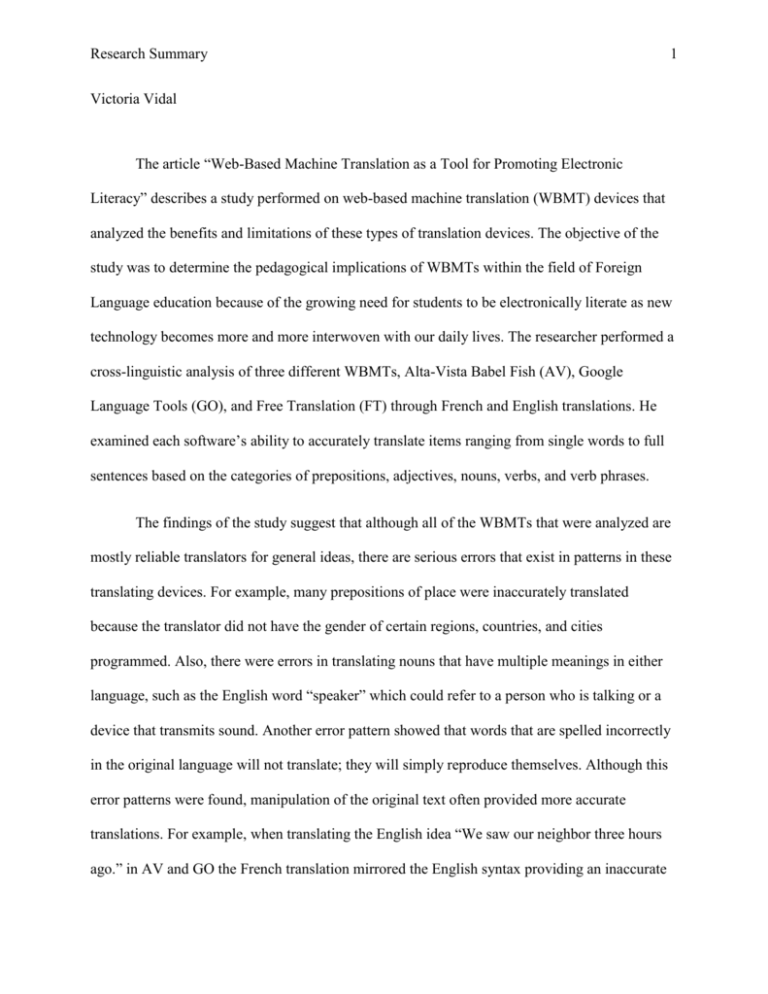
Research Summary 1 Victoria Vidal The article “Web-Based Machine Translation as a Tool for Promoting Electronic Literacy” describes a study performed on web-based machine translation (WBMT) devices that analyzed the benefits and limitations of these types of translation devices. The objective of the study was to determine the pedagogical implications of WBMTs within the field of Foreign Language education because of the growing need for students to be electronically literate as new technology becomes more and more interwoven with our daily lives. The researcher performed a cross-linguistic analysis of three different WBMTs, Alta-Vista Babel Fish (AV), Google Language Tools (GO), and Free Translation (FT) through French and English translations. He examined each software’s ability to accurately translate items ranging from single words to full sentences based on the categories of prepositions, adjectives, nouns, verbs, and verb phrases. The findings of the study suggest that although all of the WBMTs that were analyzed are mostly reliable translators for general ideas, there are serious errors that exist in patterns in these translating devices. For example, many prepositions of place were inaccurately translated because the translator did not have the gender of certain regions, countries, and cities programmed. Also, there were errors in translating nouns that have multiple meanings in either language, such as the English word “speaker” which could refer to a person who is talking or a device that transmits sound. Another error pattern showed that words that are spelled incorrectly in the original language will not translate; they will simply reproduce themselves. Although this error patterns were found, manipulation of the original text often provided more accurate translations. For example, when translating the English idea “We saw our neighbor three hours ago.” in AV and GO the French translation mirrored the English syntax providing an inaccurate Research Summary translation. However, when the original English sentence changed the word “neighbor” to the plural form “neighbors” the syntax was correctly reversed. The results of this study suggest that teachers can use WBMTs to show students that language is a dynamic communication tool and not just a set of decontextualized vocabulary or phrases. Teachers should plan to explain to their students the consequences of using online translators. They can increase students’ electronic literacy of WBMTs by creating a simple translation activity that shows the limitations of a translator. For instance the teacher can ask students to come up with a list of words that have multiple meanings in English in order to test the accuracy of the translator. Also, the teacher can show how having a solid understanding of certain aspects of the target language can allow them to manipulate texts to be translated so that they can be used as a verification tool rather than a stand-alone translator. Overall, this study reinforces the notion that teachers should raise students’ awareness of electronic literacy so that they are better equipped to navigate the digital world. 2 Research Summary 3 Resources Williams, L. (2006). Web-Based machine translation as a tool for promoting electronic literacy and language awareness. Foreign Language Annals, 39(4), 565-578





